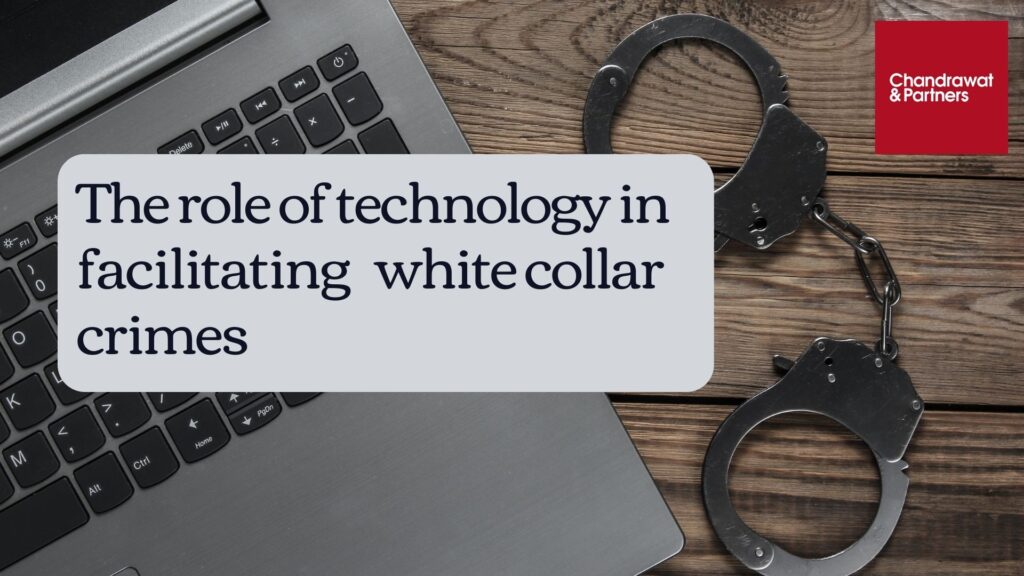The role of technology in facilitating white collar crimes
Overview
Technology has become increasingly prevalent in our lives, and so has the ability to commit fraudulent crimes or white-collar crimes. White-collar crimes of all types have become easier and less traceable, and technology has generated new varieties of white-collar crimes that involve cell phones, computers, and the internet.
Before the internet age, these crimes were committed outside the computer but now they are occurring at a wide pace by the source of the internet. Any crime committed on the internet is referred to as cybercrime, and when such crime is non-violent and especially motivated towards financial gain then it becomes a white-collar cybercrime.
Technology and white-collar crimes
White collar crimes have evolved its dimension with the passage of time. The major transformation in this category of crime has taken place when the innovation of technology entered the society with internet. Few major types of technological crimes are as follows:
Digital fraud and identity theft
- Phishing and social engineering: It explores the way criminals use technology to deceive individuals and gain access to sensitive information.
- Malware and ransomware: It examine the use of malicious software to extort money or steal data.
- Data breaches: It discusses high-profile data breaches and the repercussions for individuals and organizations.
Money laundering and crypto currencies
- Cryptocurrencies: Frauds are committed by the use of cryptocurrencies like bitcoins.
- Blockchain and anonymity: It talks about the use of blockchain technology in exploiting money laundering.
Insider trading and market manipulation
- Hacking financial systems: It discusses the way criminals have hacked into financial systems to gain insider information or manipulate markets.
- High-frequency trading: The potential for high-frequency trading algorithms are manipulated for personal gain.
Problems with White-Collar Cybercrimes
The laws regarding white-collar cybercrimes are far-reaching, constantly changing, and often difficult to understand. Law enforcement often lags behind the technological world, and prosecutors may seek harsher charges and punishments for crimes. Investigation for these crimes takes quiet a long time. White-collar cybercrimes often involve complex financial transactions and digital evidence, which can be difficult to trace and analyze.
Many white-collar cybercriminals operate across international borders, making it difficult to prosecute them under a single jurisdiction. It can cause significant financial and reputational damage to individuals and organizations, but victims may not always be aware of the breach or may not report it to authorities. Cybercriminals may use sophisticated techniques such as social engineering and phishing to trick individuals into giving up sensitive information or access to their computer systems.
The widespread use of digital technologies and online communication has increased the scope and frequency of white-collar cybercrimes, making it difficult for law enforcement to keep up with the volume of cases. The cost of investigating and prosecuting such cybercrimes can be high, and government agencies may not always have the resources or expertise to pursue these cases effectively. The potential for data breaches and other cyber-attacks can create a sense of mistrust and uncertainty among consumers, which can have a negative impact on businesses and the broader economy.
Ideas to curb white-collar crime
In order to deal with the financial losses that is caused to the company due to such crimes, the companies starts raising the cost of the products thereby decreasing in demand of goods or services by the customers which eventually results in cut in salaries and to the worst laying off of the employees from the companies due to which unemployment gets increased which impacts the economy as well, so in all together the impact of companies committing white collar crimes does not only impacts the company but the consumers, employees and the economy as well.
Increased awareness is critical to prevent white-collar crime. Everyone, including business employers, employees, and consumers, should be made aware of the warning signs of white-collar crime. Businesses can take steps to prevent white-collar crime. This includes implementing policies and procedures to deter criminal activity, monitoring employee activity, and providing ethics training on identifying and reporting suspicious behavior. Therefore, training that involves human interaction regarding integrity and ethics is important.
The majority of white-collar crime is conducted online. It is important to make a significant investment in internet security. Employing software technicians to safeguard business’s data. People can make better decisions when they understand its implications. Educating the employees on the most frequent forms of cyberattacks and consider purchasing coverage for privacy breaches.
To sum it up
The increasing role of technology in our lives has undoubtedly facilitated white collar crimes, posing significant challenges to individuals, organizations, and law enforcement agencies. PIL has had a significant impact on the economic sector by promoting transparency and accountability in government policies, natural resource management, and public procurement while protecting the rights of workers and consumers. Despite the challenges and limitations of PIL, it has strengthened democracy and the rule of law in India. Moving forward, it is essential to address these issues and create a more effective and efficient PIL system to further promote social, economic, and environmental justice in the country.
White-collar cybercrimes on the internet occur instantly without our knowing. However, by understanding the methods employed by criminals, recognizing the challenges faced by law enforcement, and implementing effective mitigation strategies, one can begin to tackle this evolving threat. Through international collaboration, enhanced cybersecurity measures, regulatory frameworks, and the intelligent use of technology itself, companies can strive to create a safer and more secure environment for all. It is not a far-fetched approach when the country will have regulations which will restrict this fusion of white collar and computer world.
For more information or queries, please email us at
[email protected]





